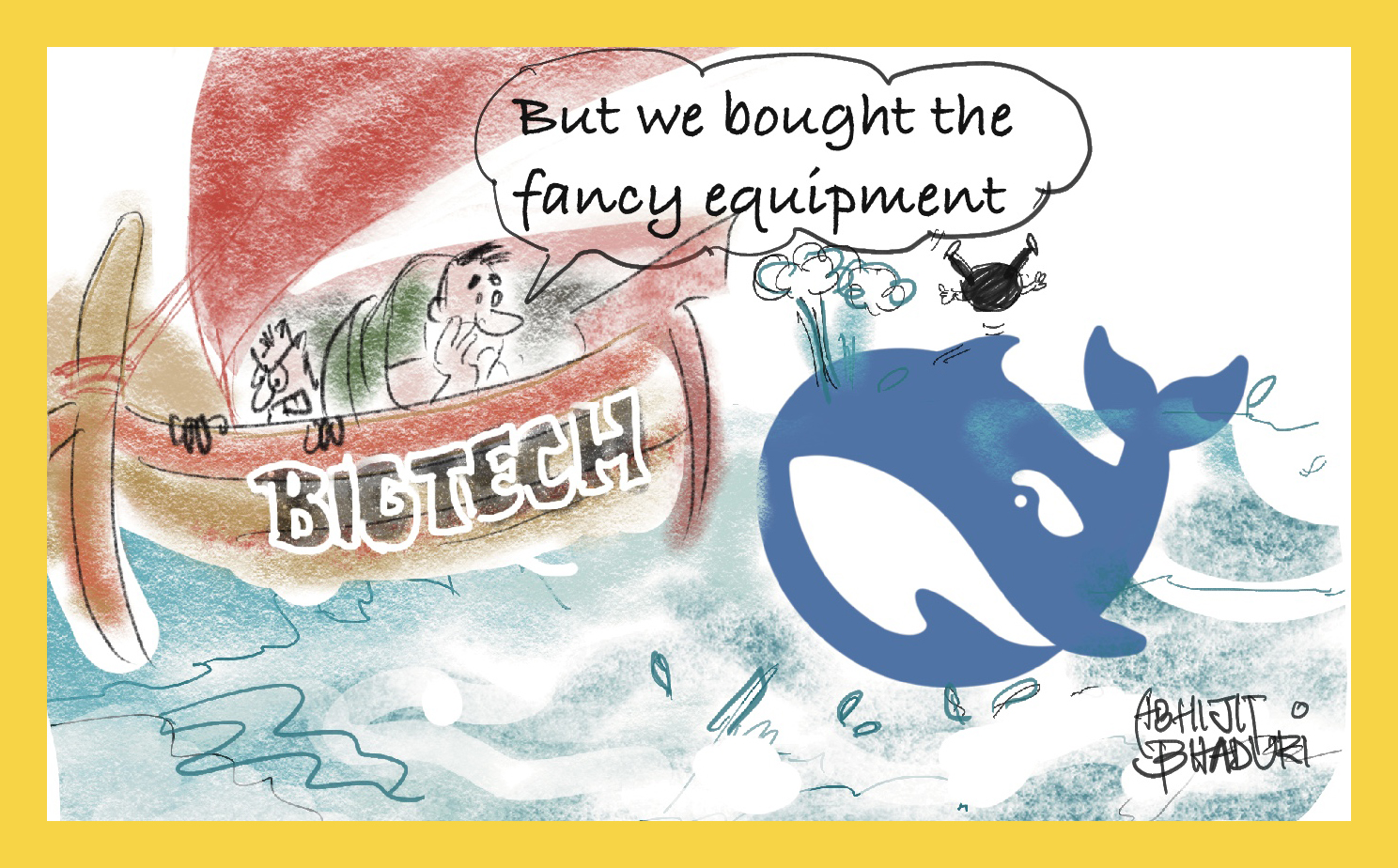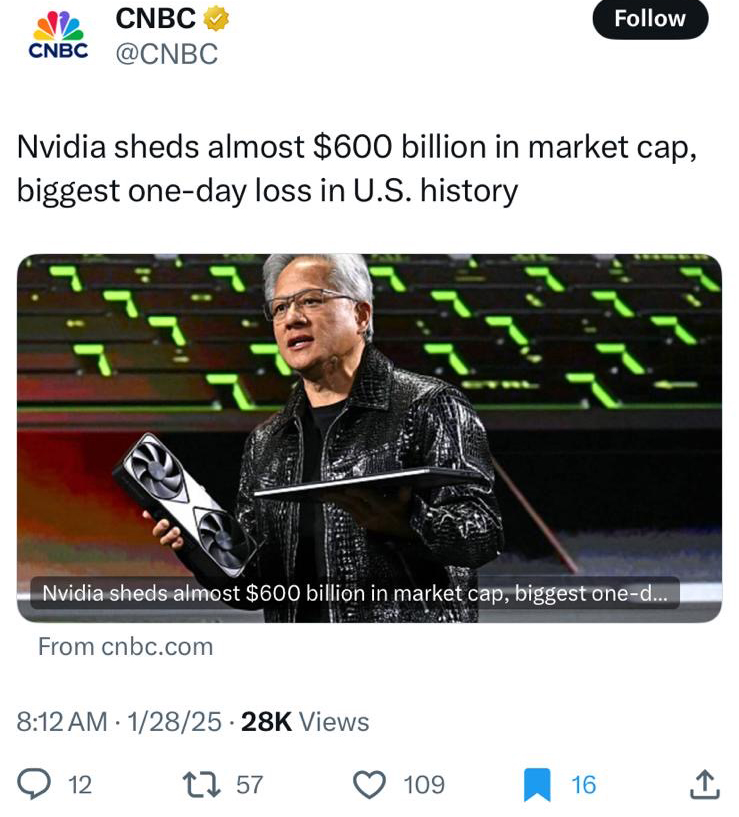
Good to be a Chipskate
The recent market turmoil caused by the emergence of DeepSeek, a Chinese AI startup, has sent shockwaves through the tech industry. The chips were down for NVIDIA. Big Tech has been stockpiling Nvidia Chips worth billions. Until DeepSeek said that it was built on the older Nvidia chips because US had placed a restriction on which chips could be given to China.

The training of DeepSeek-V3 required less than $6 million worth of computing power from Nvidia H800 chips.” Reuters
This unexpected challenger has demonstrated that innovation can thrive with a leaner approach, emphasizing efficiency and resourcefulness over massive spending. DeepSeek’s success mirrors India’s Chandrayaan-3 mission, which landed on the moon at a fraction of the cost of Hollywood blockbusters. Similarly, the rise of low-cost, high-quality mobile phones from companies like Xiaomi and OnePlus disrupted the established smartphone market, proving that flagship features could be accessible to the masses. These examples highlight the potential for frugal innovation to revolutionize industries and challenge traditional power structures.
Never diss the hungry cousin
Rajan Anandan, a former colleague from Microsoft and former head of Google India and a VC had asked Sam Altman if anything could be built in $10 million? Sam Altman spoke like a true incumbent. He never imagined something like DeepSeek could upend OpenAI.
DeepSeek’s Disruptive Model
DeepSeek’s AI model, developed at a fraction of the cost of its US counterparts, has stunned the tech world. It has achieved remarkable performance while running on less-advanced chips, demonstrating that cutting-edge AI doesn’t necessarily require massive investments in hardware and infrastructure. This frugal approach challenges the prevailing assumption that only big tech companies with deep pockets can compete at the highest level of AI development.
India’s Chandrayaan-3: A Triumph of Frugal Innovation
India’s recent Chandrayaan-3 mission to the moon is another testament to the power of frugal innovation. Chandrayaan-3 Moon mission required only $75 million — both significantly inexpensive than Hollywood’s $100m sci-fi thriller Gravity. That makes the achievement even more impressive.
The Smartphone Revolution: Frugal Innovation in Action
The rise of companies like Xiaomi and OnePlus further exemplifies the power of frugal innovation. These companies disrupted the smartphone market by offering high-quality devices with flagship features at significantly lower prices than established brands. This approach made cutting-edge technology accessible to a wider audience, forcing industry giants to rethink their pricing strategies and prioritize value. They often claim to offer 90% functionality at a fraction of the cost.
The Future of Innovation
The success of DeepSeek, Chandrayaan-3, and the affordable smartphone revolution suggests that the future of innovation may lie in embracing a more frugal approach. This shift towards frugal innovation could lead to a more equitable and sustainable future, where smaller players can compete with established giants and innovation is accessible to a wider range of individuals and communities.
Conclusion
To think out of the box, the easiest option is to begin with a smaller box. By embracing a more frugal approach, limiting resources and focusing on efficiency, we can unlock new possibilities for innovation and create a more sustainable and equitable future for all.


